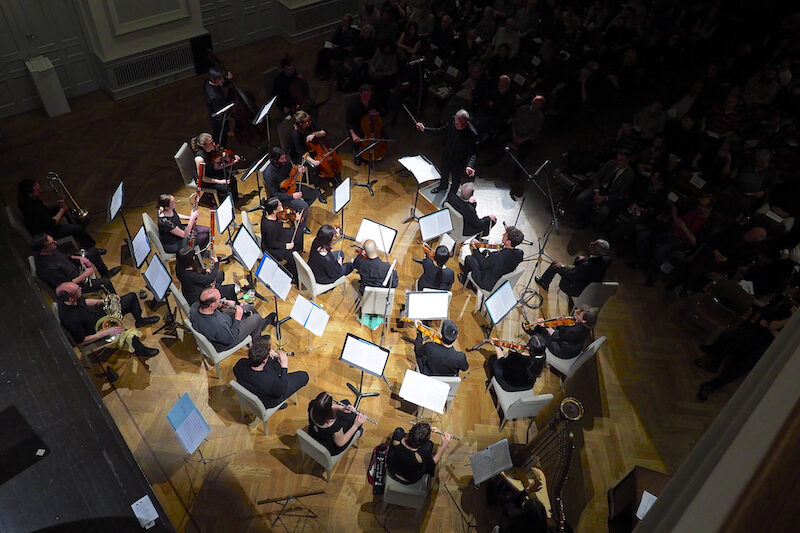Master-Pieces (2014-18)
My initial idea for creating the opera Master-Pieces came from a desire to write a piece for soprano and violin. Independently from this, I had begun to transcribe a 1936 lecture by Gertrude Stein, “What Are Master-pieces And Why Are There So Few of Them?” By rearranging the text into stanzas, Stein’s thoughts, remarks and observations suddenly became much more transparent and clear to me. I did this on my own and for no practical purpose. A little under two years before it would premiere, I received the commission to compose an opera for the festival NODO 2014, and I decided to combine the soprano/violin idea with Stein’s text.
As I continued to work on the composition (Mater-Pieces is the first music theater I have composed), additional ideas emerged, and the piece transformed into the piece you will see tonight, with a lead soprano, three male singers, three narrators and six instruments. During the initial composition stage, the director Michael Rau made valuable contributions to the piece. The present stage / theater concept was created by the director Jiří Nekvasil and the stage designer David Bazika of the National Moravian-Silesian Theatre in Ostrava, Czech Republic. It was premiered there as part of the biennial festival Ostrava Days 2015. It was staged in New York on April 28, 2018 at the Bohemian National Hall, also directed and designed by Nekvasil and Bizika.
Master-Pieces is a meditation on the nature of the creative process, and on works that we identify as masterpieces. The libretto is taken from the lecture “What Are Master-Pieces and Why Are There So Few of Them,” as well as from five short excerpts of Stein's diary "The Wars I Have Seen," written in 1943 to 1944 during the war. Stein's diary texts are spoken by the three narrators, and are used to place the opera within a certain time and space.
Gertrude Stein states, “a masterpiece has nothing to do with human nature or with identity, it has to do with the human mind and entity. It is a thing in itself and not in relation.” * Stein’s words can be more generally understood by asking: When we do something, is it about ourselves (identity), or about the work we do (entity)? A focus on oneself diminishes the chance of making an extraordinary work or a masterpiece. This is why a masterpiece is timeless. It does not reflect the identity of its author, even though it is inherently tied to its author and to its time.
The chamber opera Master-Pieces goes beyond the spectacle of musical performance, investigating a meaningful subject within a theatrical setting. The work's energy originates from the very question asked by Stein in her lecture, as she continuously veers away from the subject to contemplate and investigate issues of the creative process and the relationship between the artist and the artist’s work. The words – sometimes sung and sometimes spoken – strive to retain the poetry of Stein’s language while opening various layers of meaning.
- Petr Kotik, 2018
* Morton Feldman says the same thing in an article published by Art in America in 1973: “The painter achieves mastery by allowing what he is doing to be itself.”

